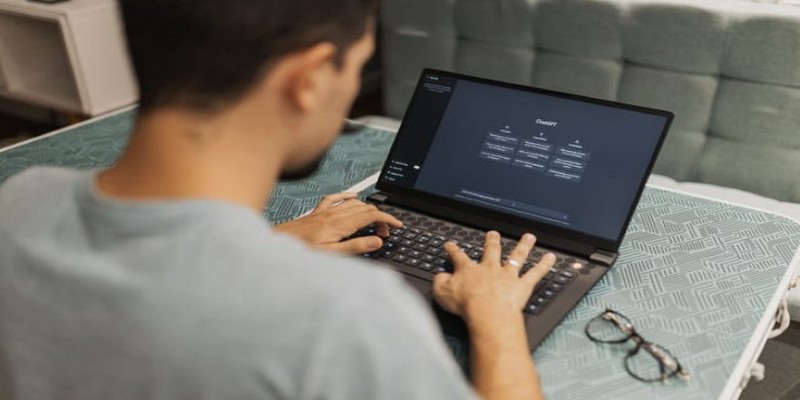Advertisement
First impressions are no longer just in person. They often happen through profile pictures on platforms like LinkedIn, Zoom, or portfolio sites. Whether you're a job seeker, freelancer, or content creator, having a clean and polished headshot can change how people perceive your professionalism. But you don't need a DSLR or expensive studio setup to get it right.
With apps like LightX Photo Editor, it’s possible to take an average photo and shape it into something much more polished. This article will walk you through how to create the perfect headshot using just your phone and the LightX app.
Before you even open LightX Photo Editor, the first step is to capture a decent photo. Use your phone camera in portrait mode if it supports it. Stand near a window to take advantage of natural light. Try facing the light rather than having it behind you. Keep your expression relaxed and your background simple. This doesn’t have to be perfect right away—LightX can help clean up most flaws—but the better your starting image, the easier the editing will be.

Once you’ve taken a few shots to choose from, import your chosen image into the LightX Photo Editor app. You’ll find it available for both Android and iOS, and it doesn’t require high-end hardware to run well.
One of the standout features of LightX Photo Editor is its background editing tool. When crafting a perfect headshot, your goal is to keep attention on your face. Busy or colorful backgrounds can steal focus. Inside the app, tap on the “Background” tool. LightX will automatically detect the subject, and you can remove the background in one click. You can then replace it with a solid color like white, gray, or even soft gradient tones to keep it neutral and distraction-free.
For a softer feel, try the blur effect instead of full background removal. Select “Blur” under the background settings and adjust the intensity. This gives a depth-of-field effect similar to DSLR portraits. It makes your face pop without looking artificial, especially if the lighting is already even.
Now that the background is handled, move on to skin retouching. LightX Photo Editor has a “Smooth Skin” option under its Retouch tab. Tap this once and adjust the slider to control how soft or defined the effect is. Be cautious here—over-smoothing can make the skin look plastic. Keep it subtle so the final image still looks like you.
Next, move to the "Light" tool. This lets you brighten shadows, reduce highlights, and even out the lighting on your face. If one side of your face looks darker, adjust the “Exposure” and “Shadows” sliders gently. There’s also an option for “Vignette” under the same menu. Adding a small vignette darkens the edges and subtly brings more focus to your face without being obvious.
These lighting tools help you mimic the soft, even lighting of a professional studio. If your original photo was taken in uneven lighting or harsh sunlight, these tools make a big difference.
A good headshot doesn’t mean changing how you look—it means presenting your best version. LightX lets you sharpen facial features naturally using selective editing. Go to the “Details” tab and use the “Brush” tool to increase sharpness just around your eyes, eyebrows, and lips. This small touch makes your eyes look more alert and gives your overall look more clarity.

The app also has a "Teeth Whitening" tool that can be brushed selectively. This can be useful if your lighting makes your teeth look slightly off-white. Again, don't overdo it. One or two swipes are usually enough to brighten the area without making it unnatural.
You'll also find light contouring options under "Makeup" if you want to experiment with facial shadows. While not always necessary, this can help define your jawline or cheekbones, depending on your face shape.
After finishing the adjustments, it's time to crop your image correctly. LightX Photo Editor offers aspect ratio options. For headshots, the square (1:1) or 4:5 vertical format works best. Your eyes should fall about one-third from the top of the image. Leave a bit of space above your head and make sure your shoulders are visible. Cropping too tightly can make the shot feel cramped. You can also use LightX’s alignment guides to center your face more accurately within the frame for a balanced composition. These guides help maintain symmetry and visual appeal.
Once you've set your crop, apply any last finishing touches, such as color grading. LightX allows you to apply LUTs or color presets, but go for soft and neutral ones. Avoid over-saturated or moody filters unless your industry demands that look.
When you're happy with the result, export the image in high resolution. Make sure the final image is saved in a format suitable for web and print, like JPG or PNG. This makes it easy to upload to professional sites, ID cards, or use in documents without worrying about pixelation.
Creating the perfect headshot doesn’t need to involve expensive cameras, pro lighting, or photo studios. With just your phone and LightX Photo Editor, you can guide your image from casual to polished in under thirty minutes. The key steps are good lighting during capture, clean background edits, light retouching, and proper cropping. The tools are simple, but when used with care, they create a professional result that stands up next to high-end portraits. Your headshot often serves as a digital handshake. Whether it’s for a resume, business card, or social profile, having a clean and confident image makes a lasting impression.
Advertisement

Wondering how ChatGPT can help with your novel? Explore how it can assist you in character creation, plot development, dialogue writing, and organizing your notes into a cohesive story

Learn the 10 best AI podcasts to follow in 2025 and stay updated with the latest trends, innovations, and expert insights.

Explore the key differences between class and instance attributes in Python. Understand how each works, when to use them, and how they affect your Python classes

Can AI-generated games change how we play and build games? Explore how automation is transforming development, creativity, and player expectations in gaming

Explore how IBM's open-source AI strategy empowers businesses with scalable, secure, innovative, and flexible AI solutions.

Struggling with synth patches or FX chains? Learn how ChatGPT can guide your sound design process inside any DAW, from beginner to pro level

Learn how to create the perfect headshot using LightX Photo Editor. This step-by-step guide covers lighting, background edits, retouching, and exporting for a professional finish

Explore the various ways to access ChatGPT on your mobile, desktop, and through third-party integrations. Learn how to use this powerful tool no matter where you are or what device you’re using

Ever wanted to make lip sync animations easily? Discover how Gooey AI simplifies the process, letting you create animated videos in minutes with just an image and audio

Curious about AI prompt engineering? Here are six online courses that actually teach you how to control, shape, and improve your prompts for better AI results

Case study: How AI-driven SOC tech reduced alert fatigue, false positives, and response time while improving team performance

Curious about LPU vs. GPU? Learn the real differences between a Language Processing Unit and a GPU, including design, speed, power use, and how each performs in AI tasks